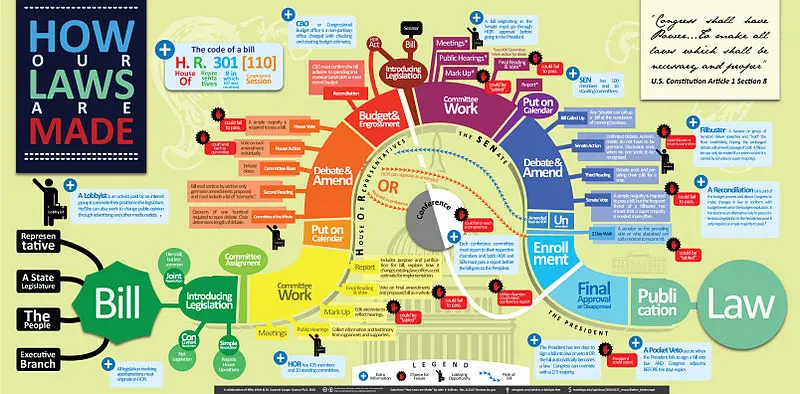
How Bills Become Laws in Arizona
Posted on Jun 30, 2017 at 06:02 PM
in Van Norman Law Firm
How Bills Become Laws in Arizona
Alright, this month of legislation education is almost up! We spent a lot of this month telling you about new bills becoming laws but we certainly didn’t mention, and you may not already be aware of, how bills become laws in Arizona. So, this time we took it upon ourselves to fix that.
- First Reading
- A bill is first introduced when a staff member reads the bill’s reference title in an open session.
- If it is a House Bill it moves on to Committees.
- If a Senate Bill, it moves on to a Second Reading. The Senate president will assign bills to committee(s). If it is not assigned it dies.
- A bill is first introduced when a staff member reads the bill’s reference title in an open session.
- Committee Hearing
- Before being considered by the full chamber, a bill must be voted on by its committees as well as the Rules Committee. Staff or bill sponsor as well as the public can explain or show support or opposition.
- House Second Reading
- Caucuses
- Lawmakers debate the pros and cons of a bill and decide where they stand.
- Third Reading
- Following passing committees, a bill can be placed on the ‘consent calendar,’ legislators agree to skip a full chamber debate. They vote and send it to the other chamber, however if no consensus is reached the House or Senate meets as a whole to discuss.
- Across the Yard
- If the bill passes through the Senate or House it moves to the other and repeats the steps. If it is not amended it goes to the Governor. If amended it goes to the first chamber for approval.
- Conference Committee
- If the original chamber rejects the amendments, a conference committee is appointed to recommend one of three versions of the bill: the original, the amended version, or a new one with the conference committee’s amendments.
- Final Vote
- Both houses will review the conference committee’s recommended bill. If approved, the bill then goes to the governor.
- Governor
- The bill goes to the governor who has five days (10 if the Legislature has adjourned) to sign the bill into law. He can also veto it or do nothing which allows the bill to become law without their signature. The Legislature can in turn override the veto with a 23rd
There are many steps along the way that can freeze a bill’s progress and effectively kill it. This has been a very basic explanation of the process.
Are you looking for legal help? Contact Van Norman Law Today!
Images used under creative commons license – commercial use (6/30/17). All credits, citations. and links to the license are available at the bottom of the image.



